A mudroom is a specialized space within a home, typically located at the secondary entrance, which serves as a buffer zone to capture dirt, moisture, and clutter before these elements can enter the main living areas. It is strategically designed to offer storage and organization for items such as shoes, coats, and outdoor gear, making it a critical first line of defense against outdoor messes. The design of a mudroom often includes features like benches for sitting while removing boots, hooks for hanging items, and easy-to-clean flooring.
The necessity of a mudroom especially in homes located in climates prone to inclement weather or for families leading active, outdoor lifestyles. It helps in maintaining the cleanliness and order of the rest of the home while also providing a structured and convenient space to manage everyday items like backpacks, mail, and laundry.
This designated area prevents the spread of dirt and debris, reduces clutter, and minimizes the stress of managing an organized home, making it an essential feature in modern house designs.
1- Understanding the Purpose of a Mudroom
A well-designed mudroom is a versatile, hardworking space that offers the first impression of your home’s interior. Its primary function is to store and organize items like shoes, coats, and outdoor gear, keeping the main living areas clean.

However, mudrooms also frequently accommodate other functions such as laundry facilities, pet care stations, or even creating areas, depending on the needs and lifestyle of the household.
2- Essential Features of a Functional Mudroom
2.1. Storage Solutions
The cornerstone of any mudroom is its storage. Built-in cabinets, lockers, and cubbies help segregate personal items neatly. For footwear, consider pull-out drawers or open cubbies beneath a bench. Overhead and wall-mounted hooks provide easy access to coats and bags, while baskets and shelves can manage smaller accessories like hats and gloves.

2.2. Durable Flooring
The flooring should withstand heavy traffic, moisture, and dirt. Options like porcelain tile, vinyl, or sealed concrete are popular due to their durability and ease of maintenance. These materials can also be selected to complement the home’s overall design theme.
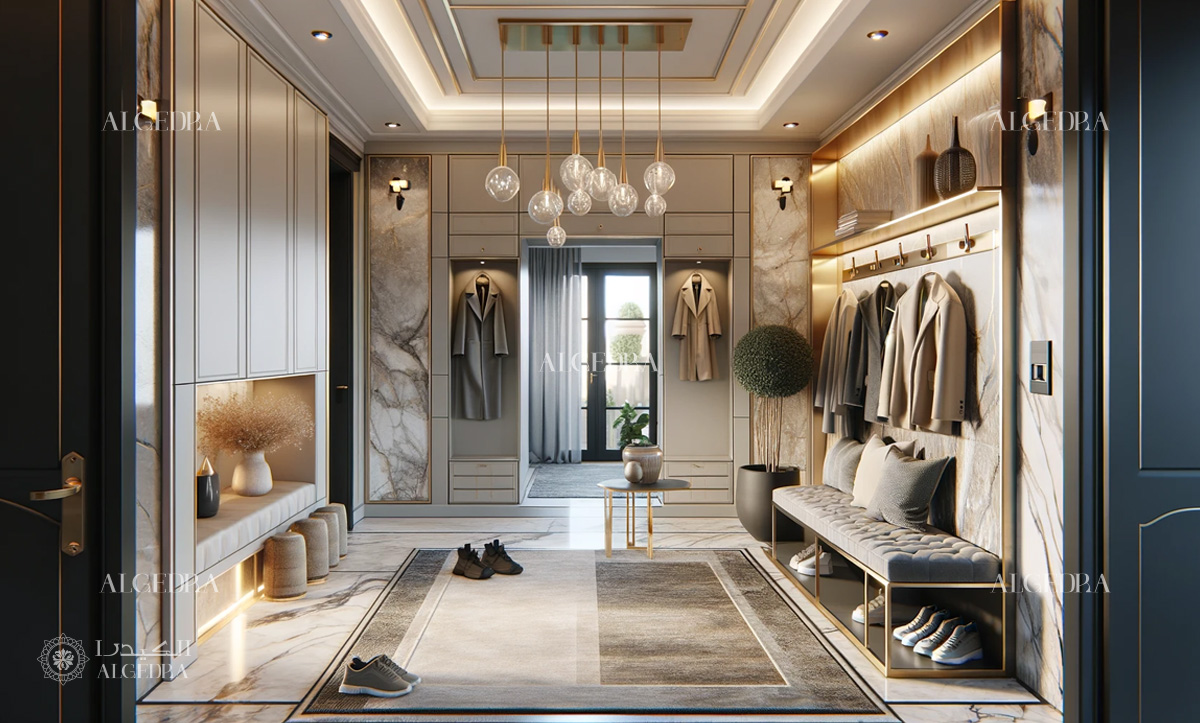
2.3. Comfortable Seating
Installing a bench or a series of chairs aids in putting on or taking off shoes and also introduces an element of comfort. Storage benches are a great dual-purpose solution, offering seating while hiding away items like shoes and sports equipment.

2.4. Laundry Integration
If space permits, incorporating laundry machines, a utility sink, and counter space for folding clothes can boost the functionality of a mudroom, especially for busy families.
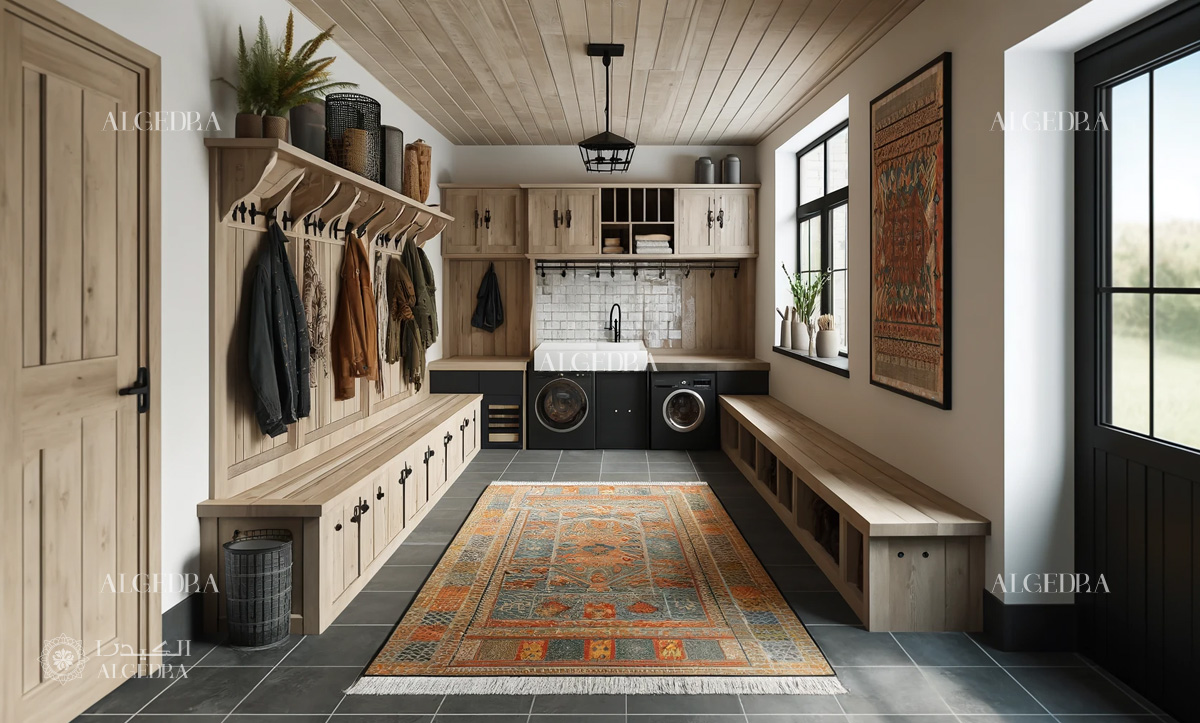
2.5. Specialized Areas for Wet Items
A designated area for wet umbrellas, boots, and coats, equipped with a drip tray or a built-in drain, can keep the rest of the mudroom dry and organized.

2.6. Adequate Lighting
Ensure the space is well-lit with overhead lighting fixtures. Additional task lighting under cabinets or above work areas can help in performing specific tasks like treating stains or searching for items.
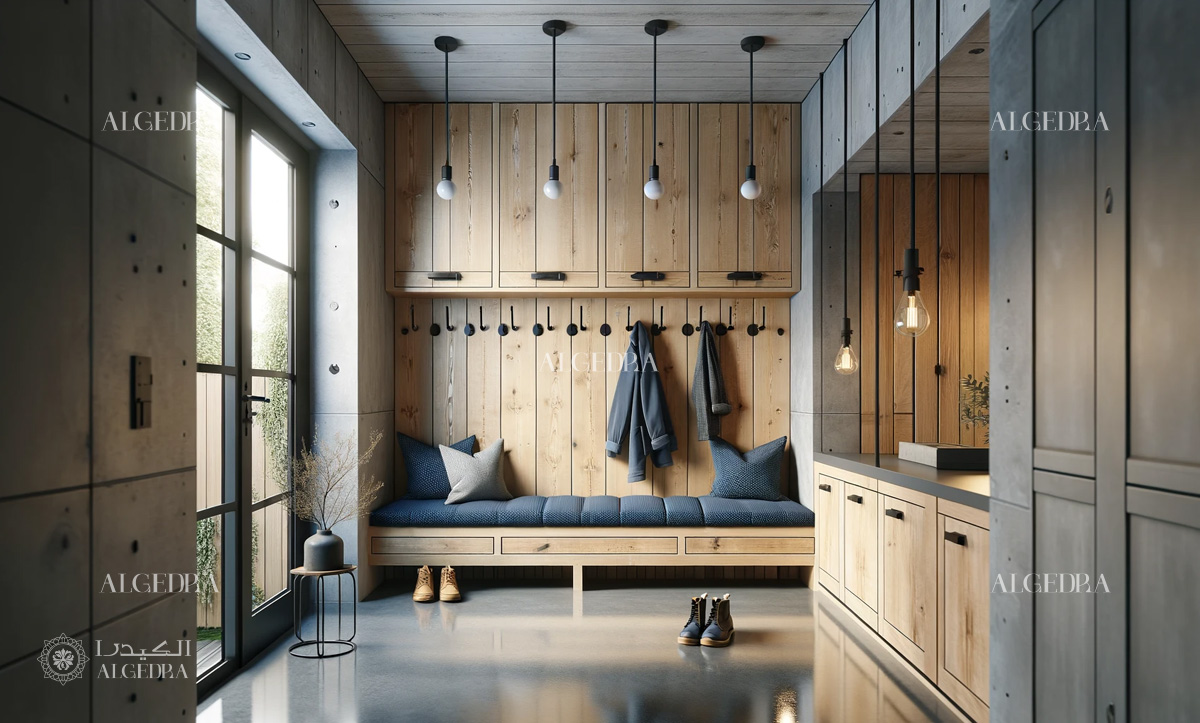
3- Styling Your Mudroom
Once functionality is utilized, styling the mudroom can enhance its appeal:
3.1. Color Scheme
Opt for colors that match or complement the rest of your home. Light colors can make the space feel larger, while darker hues are better at hiding dirt and wear.

3.2. Personal Touches
Decorative elements like art pieces, family photos, or a statement rug can add personality into the space.
3.3. Consistent Design Theme
Complement the aesthetic of the mudroom with the overall style of the house—be it contemporary, traditional, or rustic—to ensure a cohesive look.
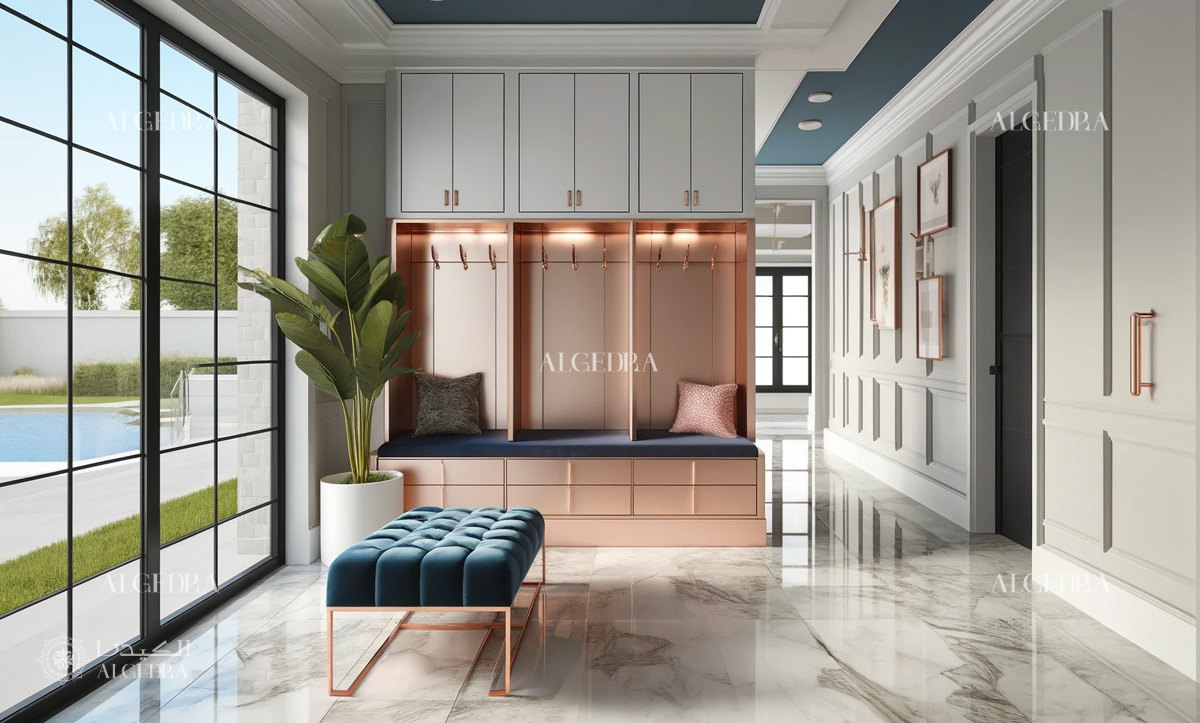
3.4. High-Quality Materials
Choose materials that add a touch of elegance, such as natural stone counters or designer tiles.
3.5. Organizational Accessories
Employ stylish yet functional organizational tools like decorative bins and labels to keep everything in its place while also adding to the décor.
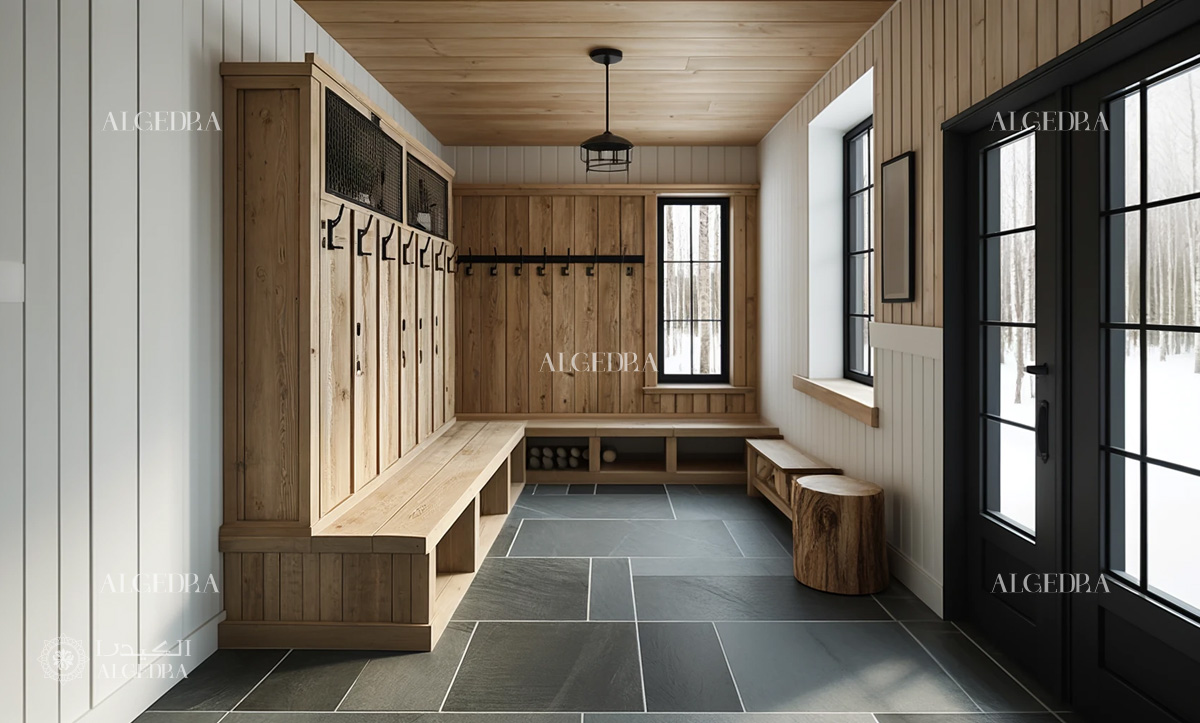
4. Final Touches to Enhance the Space
4.1. Mirrors
Installing a mirror can enhance the light in the room and serve for last-minute outfit checks.
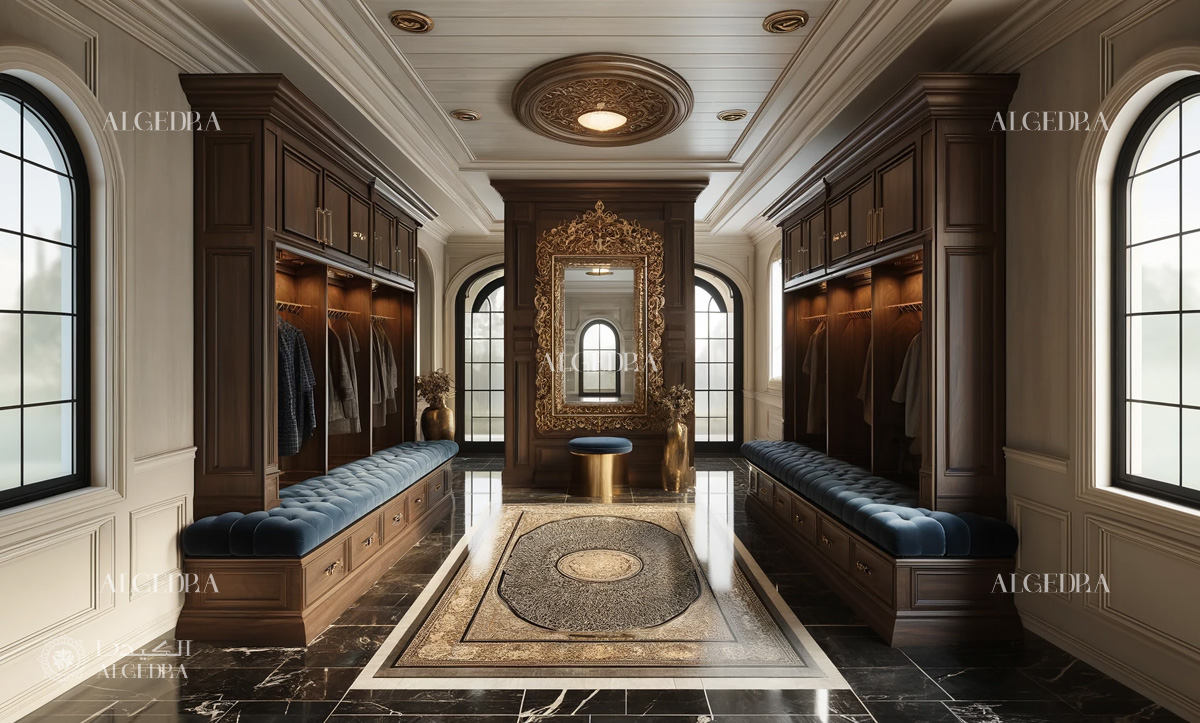
4.2. Plants
Adding greenery can bring life and color to the area, making the space more welcoming.
4.3. Statement Lighting
A distinctive light fixture can act as a focal point and add to the room’s decor.
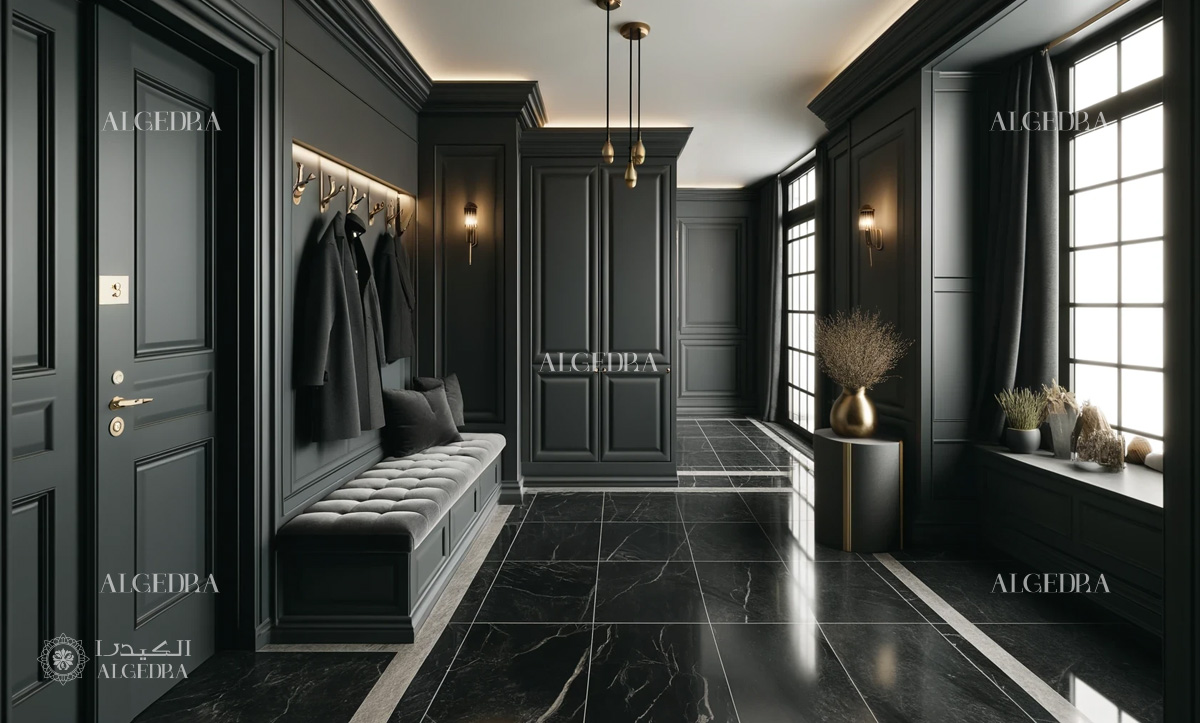
Designing a mudroom requires a thoughtful balance of functionality and style to ensure it meets the practical demands of your lifestyle while also offering a welcoming entrance to your home. Focusing on customized storage solutions, durable materials, and personal decorative touches, you can create a mudroom that significantly enhances both the organization and the aesthetic appeal of your home. A well-designed mudroom not only simplifies daily life but also complements the architectural style and decor, establishing itself as an indispensable part of the household.